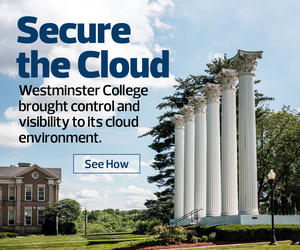The world of higher education launched into a tailspin in March when COVID-19 drove universities around the nation to push instruction online. After years of seeking a strategic place at the table, IT professionals in higher education found themselves with an opportunity to prove exactly how critical their roles have become to student and faculty success.
To gauge how the pandemic and the shift to virtual instruction have affected higher ed IT teams, EdTech spoke with John O’Brien, CEO of EDUCAUSE. With more than 100,000 members in approximately 50 countries, EDUCAUSE is the largest community of higher education IT experts. The organization has played a guiding role in helping colleges and universities around the country adjust to this year’s rapid shift to remote, online and blended learning.
MORE ON EDTECH: Read our exclusive Q&A with EDUCAUSE Cybersecurity Program Director Brian Kelly.
EDTECH: How prepared do you feel colleges and universities, particularly in IT, are for the new academic year?
O'BRIEN: It’s never accurate to make any single statement and expect it to apply across the higher education landscape, especially right now. I think the more urgent question is, “prepared for what?” The remarkable pivot in spring was, ironically, simpler because the destination was straightforward, although the timeline was utterly unreasonable. Right now, it seems that pivoting of various kinds will continue, but from what to what is all over the map.
The good news is that we learned a great deal in the spring. Campuses are not only armed with practical understanding but also confidence in what we can accomplish under pressure. We know we can do more than we ever thought possible, and that we can do it faster than anyone imagined. That’s a game changer.
Colleges and universities have used summer to prepare for whatever fall brings. This work includes things like refining technology infrastructure, professional development for faculty and so much more.
EDTECH: Do you feel this shift to sudden remote learning has changed the attitude toward remote, online and blended learning?
O'BRIEN: Absolutely. Since I was working in instructional technology 15 years ago, the biggest challenge has always been urging faculty to have open minds and actively explore how technology could enhance teaching and learning. In spring, there was no other choice for most faculty. That means that a large proportion of faculty now have that biggest of hurdles behind them, and that is something to build on when the dust settles.
A recent report sponsored by Quality Matters and Eduventures looked at spring and concluded that the majority of faculty forced to teach remotely nonetheless appear to have more positive than negative attitudes about online learning. Another study of faculty during the COVID-19 crisis, this one by Tyton Partners and Digital Promise, came to similar conclusions. Comparing their pre- and post-COVID perceptions, nearly half reported an improved perception and only 17 percent said it became more negative.
I’m particularly encouraged that there seems to be a broad understanding that the pivot in the spring was not “online teaching” but was actually emergency remote teaching.
LEARN MORE: Get the Defense-in-Depth strategy checklist.
EDTECH: How do you think schools can best ensure students have access to the resources and technologies they need to succeed in the current climate?
O'BRIEN: We first need to recognize that our most vulnerable students are disproportionately impacted by the pandemic. For example, lower-income students are 55 percent more likely to delay graduation than higher-income students, and the expected GPA gap between these groups of students was doubled by the COVID-19 crisis.
In addition, many of our most vulnerable students also lack access to broadband and the devices needed to thrive in an online environment. The entire EDUCAUSE community has worked to share best practices for addressing these needs, going back as far as May, when colleges and universities shared with us the various strategies used. In another poll, 74 percent of respondents said they planned to provide loaner laptops or tablets and offer virtual troubleshooting assistance to students. Other strategies included expanding Wi-Fi hotspots, sharing options for low-cost services and making financial assistance available for technology needs. There’s an intense need for technology infrastructure deployment to help campuses address advising, health and wellness, and for expanding advising’s reach.
EDTECH: How do you think the current situation is affecting the role of information technology in higher education? Do you see IT playing a more strategic role in education?
O'BRIEN: The COVID crisis has added a gigantic exclamation point to the message we’ve been stressing about the strategic role of IT for years. The utility thinking that was instrumental to the rise of IT in higher education is not the kind of thinking that will take us into the next decade. Technology innovation helps campuses solve the institutional grand challenges that keep presidents awake at night. Digital transformation might have seemed like a rhetorical flourish before, but now it’s so clearly real. Technology innovation is becoming a differentiating value for institutions and a path to achieving institutional goals and stability. It’s not just a lifeline that got us through a tricky situation. It is and must increasingly be understood as an integral, strategic part of the successful college or university.
We have data suggesting that over two-thirds of CIOs participated in their schools’ pandemic planning leadership teams, and being at this table is a good start. We’ll know that institutions have seen the light I’m talking about when a higher percentage of CIOs have a seat on the president’s cabinet.













